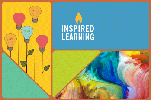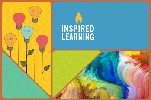CES began running 21st Century Learning Programs after school 20 years ago, and currently runs fourteen After School Programs in Franklin and Hampshire counties, including 12 programs funded by 21st Century Learning Grants, as well as two fee-for-service programs. These After School Programs serve approximately 750 students in total.
As host schools closed their buildings for the COVID-19 crisis, CES After School programs also temporarily halted their operations. However, the talented teachers and coordinators in these programs have not been idle. They have been working remotely to develop virtual enrichment activities for students, and are reaching out and polling all their families to identify what resources they have to participate in clubs and activities in an online mode. As they talk with students and families, they have also been identifying their interest in participating in virtual after school – which is very high.
The goal is to start up again with activities in every program by April 7th or mid April, with a majority of students who were attending to be able to attend virtually. As the program coordinators identify students who may have barriers to attending online, they will be working through how to support them for access.
While use of technology is one means of connecting with students, CES programs are developing ways to support students who may not have access to technology so they may continue to remain engaged offline. This may include providing grab and go materials such as art supplies; kits for hands-on projects; providing culturally and linguistically relevant books; a scavenger hunts around their home or neighborhood (with the appropriate social/physical distancing); engineering design challenges; materials for letter writing or artistic creations for a family member, friend, medical professional/first responder, or an older adult in a nursing facility, etc.
Chris Taggart, Director of 21st Century Learning Programs at CES, made the point that while we are aware some students living below the poverty line may have difficulties accessing virtual enrichment, “We don’t want to set a ceiling based on assumptions that that’s the case, we want to know for sure.” In a number of communities, the schools have already been planning for this, sending home Chrome books to students and working to support student connectivity in other ways.
The coordinators have already reached out to all the students and families that were attending to let them know, but any family that wants more information can contact their site coordinator.
At the Maple Street Program, 20 families have already responded enthusiastically about participating in the activities.
At the Greenfield High School program program staff held an online meeting to plan their offerings, and five of the students also attended. The students were very engaged in helping to plan and build activities for the virtual clubs and for the program. One student said, “School and after school were my life and I didn’t realize it. Anything you do, I’m there.”
Program staff will be working to try to offer virtual enrichment and learning activities, like yoga club or hip-hop club, that are similar to the opportunities they offer face to face. Some clubs and activities are ready to go in a virtual format, such as gaming or sports clubs. Staff will work to organize two to three enrichments during the programs’ regular afternoon time frames.
For more information about the programs, please visit our website.

